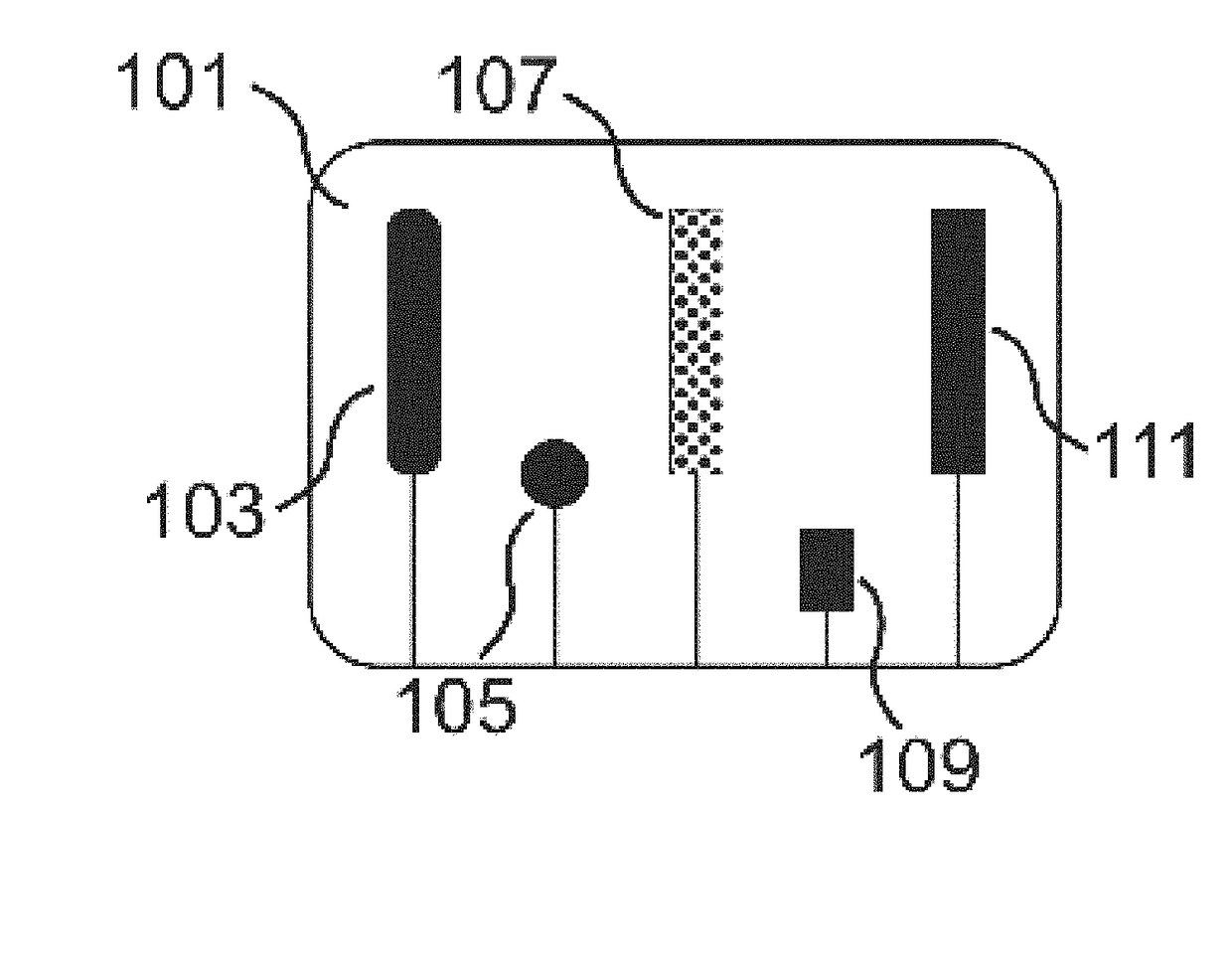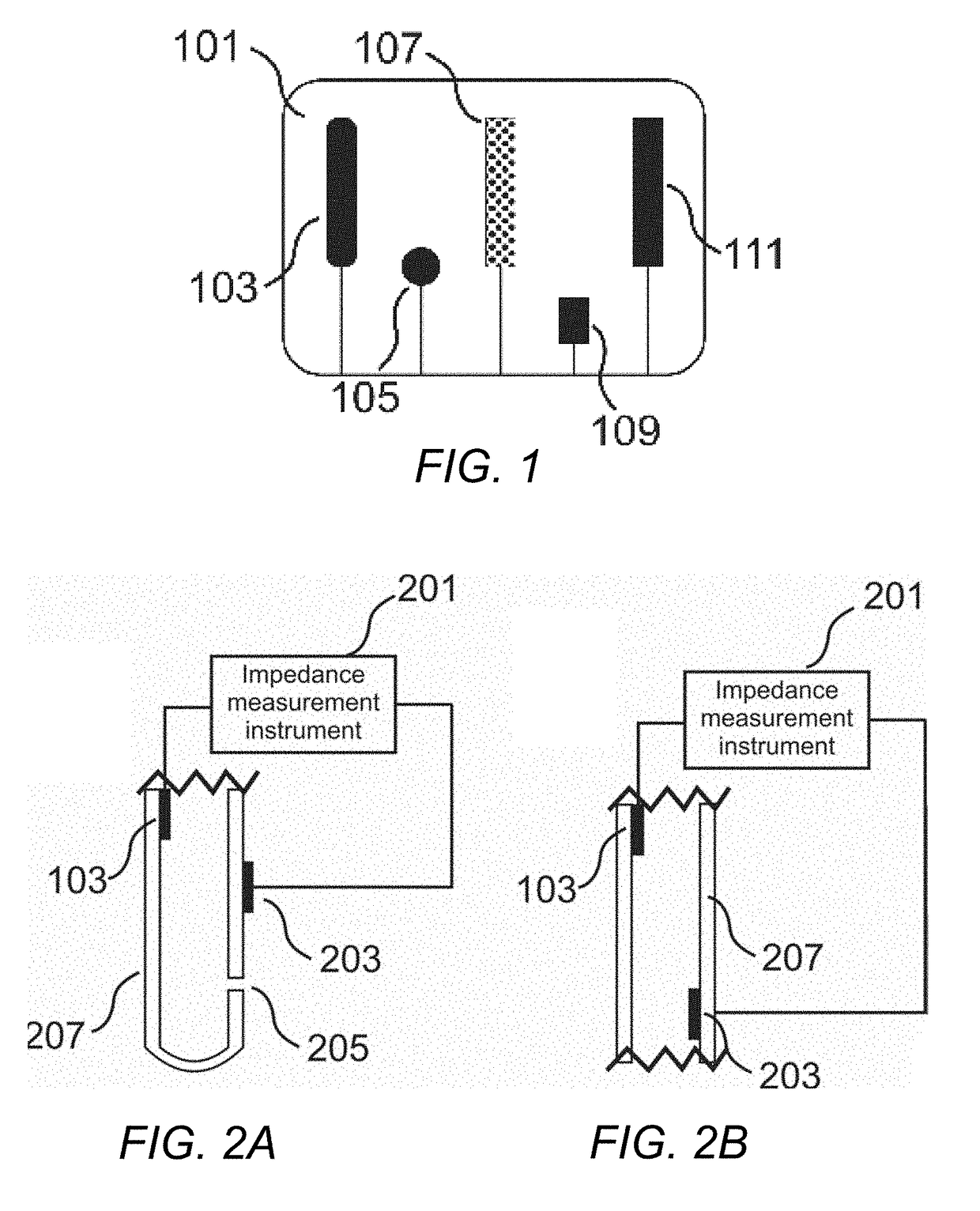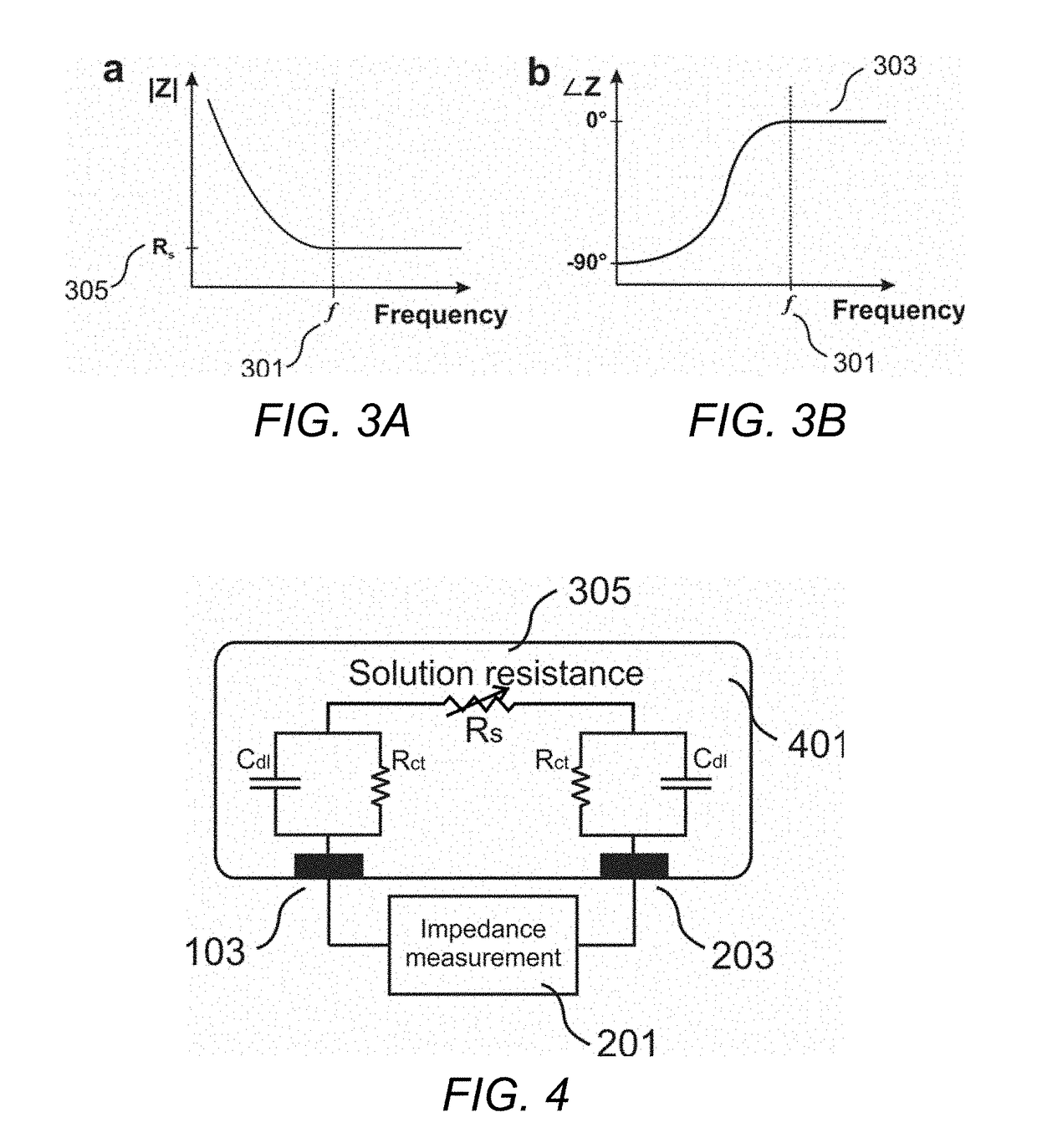Method and sensor for detecting catheter obstruction
a catheter and sensor technology, applied in the field of catheter obstruction, can solve the problems of catheter obstruction that may need to be inferred, inadequate shunt performance, false positives or negatives,
- Summary
- Abstract
- Description
- Claims
- Application Information
AI Technical Summary
Benefits of technology
Problems solved by technology
Method used
Image
Examples
Embodiment Construction
[0033]Illustrative embodiments are now described. Other embodiments may be used in addition or instead. Details that may be apparent or unnecessary may be omitted to save space or for a more effective presentation. Some embodiments may be practiced with additional components or steps and / or without all of the components or steps that are described.
[0034]Electrochemical impedance and an electrochemical impedance-based sensor may be used in detecting progressive obstruction or complete blockage of implanted drainage catheters. Such catheters may be placed in a brain ventricle for draining excess cerebrospinal fluid in the treatment of hydrocephalus. They may instead be placed within a cardiovascular system, endocrine system, lymphatic system, digestive system, or any other fluidic system of the body for fluid removal and / or for identifying an obstruction. Diameters of these catheters, as well as their subsequent drainage ports can vary in size depending on the application and may, for...
PUM
 Login to View More
Login to View More Abstract
Description
Claims
Application Information
 Login to View More
Login to View More - R&D
- Intellectual Property
- Life Sciences
- Materials
- Tech Scout
- Unparalleled Data Quality
- Higher Quality Content
- 60% Fewer Hallucinations
Browse by: Latest US Patents, China's latest patents, Technical Efficacy Thesaurus, Application Domain, Technology Topic, Popular Technical Reports.
© 2025 PatSnap. All rights reserved.Legal|Privacy policy|Modern Slavery Act Transparency Statement|Sitemap|About US| Contact US: help@patsnap.com



